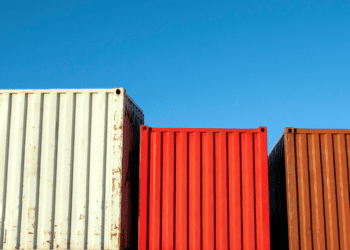When it comes to purchasing a used shipping container, conducting a thorough inspection is essential. Shipping containers can go through a lot of hard use before they are sold used and can be found in varying levels of condition. It is common for used shipping containers to have been used for approximately 10-15 years for shipping freight and storing goods before they are inspected and added to our inventory at Coast Containers. These containers are often repurposed for various purposes such as storage units, offices, or even homes.
At Coast Containers, we ensure that each used sea container for sale has been inspected for damages, and all of our used storage containers are guaranteed to be wind and watertight (WWT) and rodent-proof at the time of purchase. However, it is still important to ensure that the container meets your requirements and expected condition before making a purchase.
Used shipping containers have become increasingly popular in various industries due to their numerous benefits. Not only do they offer cost savings, but they also provide environmental advantages and have a wide range of potential applications.
One of the primary reasons why buying used shipping containers is advantageous is the significant cost savings they offer. Compared to purchasing brand new containers, used ones are typically much more affordable. This makes them an attractive option for businesses and individuals looking to acquire storage or transportation solutions without breaking the bank. Moreover, these cost savings can be even more substantial when buying shipping containers in bulk or through reputable suppliers.
In addition to financial benefits, using used shipping containers also contributes to environmental sustainability. By reusing existing containers instead of producing new ones, you are effectively reducing the demand for additional manufacturing processes and resources. This helps minimize carbon emissions and conserve energy and raw materials that would otherwise be required for container production. Furthermore, repurposing these containers extends their lifespan and prevents them from ending up in landfills.
The versatility of used shipping containers allows for a multitude of applications across various industries. From on-site storage solutions for construction sites or events to modified container structures like pop-up shops or cafes, the possibilities are virtually endless. These durable steel structures can withstand harsh weather conditions and provide secure storage options for both commercial and personal use.
When purchasing a used shipping container for storage or any other purpose, it is important to understand your requirements to ensure you make the right choice. Two important factors to consider are the size of the container and the specific features it should possess.
First, assess your storage needs or intended use for the container. Consider the volume of items you plan to store or transport and estimate the space required accordingly. Shipping containers come in various sizes, with standard options such as 20-foot and 40-foot containers being widely available. Understanding your space requirements will help you select a suitable size that optimizes storage capacity without excess wastage.
Apart from size, you will need to identify specific features that are necessary for your intended use. Standard shipping containers have a height of approximately 8 feet 6 inches, while high cube containers offer added vertical space with a height of around 9 feet 6 inches. If you need extra headroom for taller items or want to maximize vertical storage capacity, a high cube container may be more suitable.
By understanding these requirements – determining the appropriate size and identifying specific features needed (such as standard versus high cube), you can make an informed decision when purchasing a used shipping container.
So now that you know what type and size of shipping container you need it’s time to think about an inspection. A pre-purchase inspection of a second-hand shipping container involves evaluating several key factors.
The exterior inspection plays a very important role in assessing the overall condition and functionality of the container. Here are three key points to consider during the exterior inspection:
When conducting an Interior Inspection, there are several important factors to consider to ensure the safety and cleanliness of the space.
Additionally, knowing the origin of the container can provide insights into potential exposure to corrosive environments or previous cargo types that may impact its structural integrity. Containers from certain regions may have different levels of wear and tear based on climate conditions or specific cargo transported.
In this blog, we have highlighted the significance of conducting a thorough inspection when considering purchasing used shipping containers. By carefully examining the container’s condition, structural integrity, and potential issues, buyers can make informed decisions and avoid costly mistakes.
While at Coast Containers we pride ourselves in ensuring our containers are thoroughly inspected for damages, we strongly encourage buyers to prioritize their due diligence when buying used shipping containers. Investing time and effort into inspecting the containers personally or with the help of professionals and obtaining all necessary documentation will ensure a smooth and satisfactory purchasing experience.
You may ask yourself “Where can I find used shipping containers for sale near me?”. Well, you’re in luck Coast Containers has locations all across Canada. Check out our inventory of both new and used shipping containers. We understand that each customer has unique requirements, and we are committed to providing a wide range of options to suit your specific needs.
Whether you are looking for standard containers or specialized units, our team is ready to help you find the perfect solution. We’re here to answer any questions you may have and guide you through every step of your container buying journey – contact us to take the first step.


